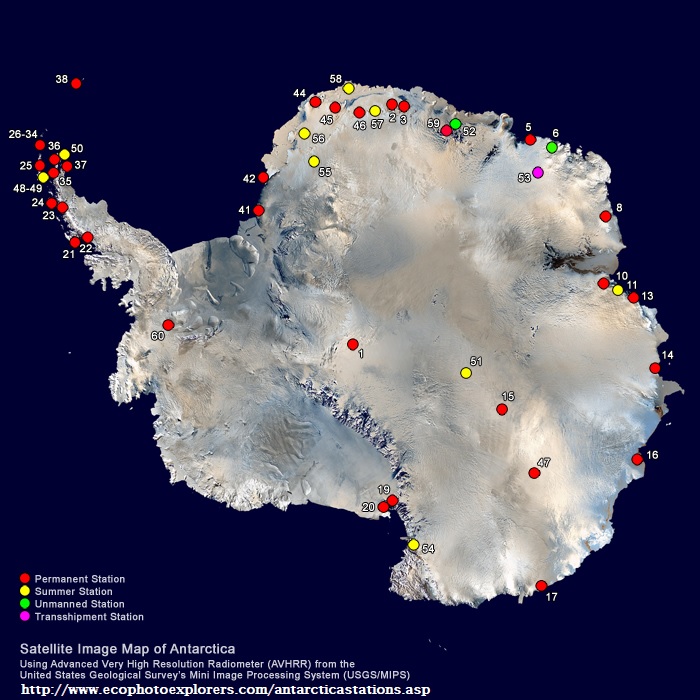
Thirty two countries have bases in Antarctica and of those bases there are roughly 50 year-round stations and 30 summer (field) stations. The Antarctic Treaty, signed in 1959, set the stage for Antarctica to be a place for science, co-operation
The main reason for the bases is to support science. Due to it’s clean air and minimal background radiation, lack of haze, and isolation the Antarctic stations have been very successful at carrying out scientific research in the field of astrophysics, astronomy, and related studies but also wildlife studies, meteorology, climate change and even the psychology of small, isolated groups.
In the summer the stations contain 4-5000 people and around 1000 through the winter. Many of the stations use alternative energy sources such as wind and solar, along with diesel fuel.
The Protocol on Environmental Protection to the Antarctic Treaty (also known as the Madrid Protocol) entered into force in 1998 and comprehensively protects Antarctica as a natural reserve devoted to peace and science.
Under the Environmental Protocol, mineral resource exploration, mining and oil drilling is banned indefinitely and the environment must be a fundamental consideration in the planning and conduct of all activities in Antarctica.
The bases have to comply with the protocol which is why all waste is removed from the bases and generally returned to the country of origin.
A base may only be set up if a country is a signatory to the Antarctic Treaty, complies with the Treaty and protocol, and agrees to pursue a programme of scientific research. Nations, being what they are, they also have their own geopolitical agendas and some may see having a base in Antarctica as an attempt to stake a future claim.
However, currently there is a high level of co-operation between many of the Antarctic bases and their scientists and hopefully this will continue for the for-seeable future.

